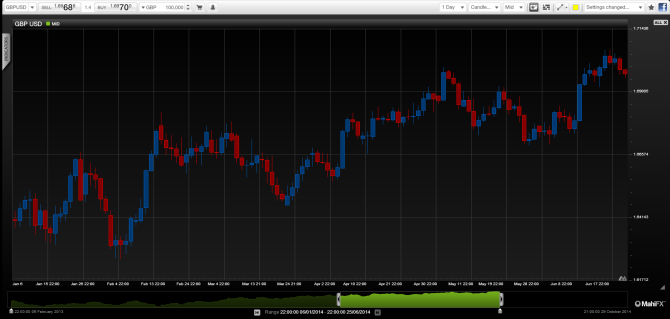Market View – MahiFX
It’s quite common these days for central bankers to say something, even quite boldly, and soon after contradict themselves sending the currency in a completely different direction. Is it currency manipulation at work or something far bigger?
This week it was Mark Carney’s turn, the Bank of England governor, to wrong foot the forex markets by rowing back on earlier warnings that UK interest rates are soon to rise. He said there was plenty of spare capacity in the economy. So would a strong showing on GDP growth or house prices quickly see him make another U-turn?
These statements leave forex markets bewildered and suggests central bankers are no more clued up about what’s really happening in the economy than anyone else and therefore have no more idea what they’ll be doing in six months’ time than the markets.
These statements often occur when the currency becomes uncomfortably strong – cable was looking set for more gains above 1.7000 before Carney spoke. But this may not have been an attempt to talk down GBP.
GBP/USD wobbles on a Carney ‘rethink’ moment

Disruption, Distortion and Disconnection
Carney’s comments surprised the markets, aside from the UK’s large current account deficit, because there was an expectation that the strength of GBP was becoming less important along with exports, as the domestic economy is performing well.
In some respects the lack of consistency is the fault of the central bankers.
The forward looking indicators they use such as the stock market and bond yields have been distorted by their own actions, such as quantitative easing. They’ve also funded massive speculative activity across many markets eroding their predictive value with very cheap money.
But then there are some key factors outside the control of central banks.
For instance, the US unemployment rate is falling, but an alarmingly large proportion of people have simply dropped out of the workforce. In the UK companies are reluctant to invest, despite record profitability. Contradicting patterns such as these are puzzling policy makers.
How to measure change?
At the same time large disruptive forces are cascading through the economy, such as peer to peer technologies, which are challenging the traditional role of intermediaries. There’s the world’s rapidly ageing population, which is changing consumption patterns. It is still not entirely clear what the exact impact these two trends are having on employment, inflation and economic growth, but it is probably negative.
The globalised economy has become so complex that it is probably beyond the grasp of a small group of people to understand it and who rely on economic models geared to a pre-2008 era.
These contradictory statements will remain part of the new normal until central bankers can tweak their economic models to reflect the massive changes taking place in the economy and be able to properly understand and measure their influence.
By Justin Pugsley, Markets Analyst MahiFX. Follow@MahiFXon twitter
